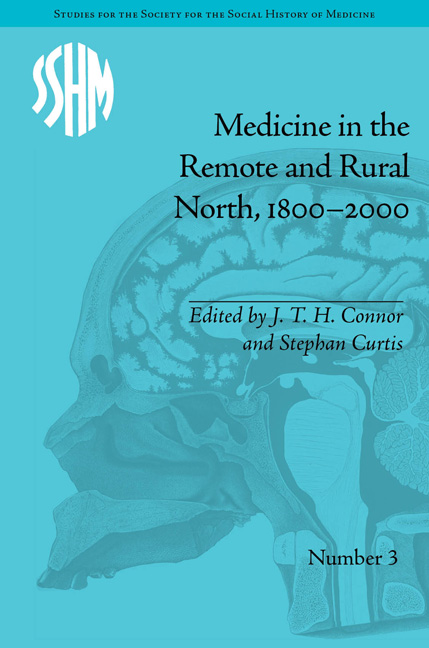Book contents
- Frontmatter
- CONTENTS
- Acknowledgements
- List of Contributors
- List of Figures and Tables
- Introduction: Cores/Peripheries – Rural/Remote: Medicine, Health-Care Delivery and the North
- Part I Remote Medicine and the State
- 1 Medical Services in a Northern Russian Province, 1864–1917
- 2 Changing Minority Culture: Health Services and Health Promotion in Northern Norway, 1900–50s
- 3 The Sami, Sami-ness and the Staffing of Health Services in Northern Norway, 1960s–2001
- 4 Foreshadowing the Future: Health Services in Remote Areas, the National Health Service and the Highlands and Islands of Scotland, 1948–74
- Part II Doctors and Doctoring in Remote Areas
- Part III Women, Health Care and the Practice of Medicine
- Notes
- Index
3 - The Sami, Sami-ness and the Staffing of Health Services in Northern Norway, 1960s–2001
from Part I - Remote Medicine and the State
- Frontmatter
- CONTENTS
- Acknowledgements
- List of Contributors
- List of Figures and Tables
- Introduction: Cores/Peripheries – Rural/Remote: Medicine, Health-Care Delivery and the North
- Part I Remote Medicine and the State
- 1 Medical Services in a Northern Russian Province, 1864–1917
- 2 Changing Minority Culture: Health Services and Health Promotion in Northern Norway, 1900–50s
- 3 The Sami, Sami-ness and the Staffing of Health Services in Northern Norway, 1960s–2001
- 4 Foreshadowing the Future: Health Services in Remote Areas, the National Health Service and the Highlands and Islands of Scotland, 1948–74
- Part II Doctors and Doctoring in Remote Areas
- Part III Women, Health Care and the Practice of Medicine
- Notes
- Index
Summary
In 2001, the Norwegian Ministry of Health and Social Affairs established the country's first centre for Sami health research. It is hosted by the University of Tromsø, the northernmost university in Norway, but also based in Karasjok in Finnmark; thus, it is set in a region that for hundreds of years has been ethnically diverse and, in certain areas, predominantly Sami. The centre is an institutionalized manifestation of political and academic will to consider the interrelatedness of Sami-ness, sickness and health. Members of the Sami Medical Association (a physicians’ association), founded in the mid-1980s, played no small part in laying down the principles upon which the centre was to be based: first, it was to focus solely upon the Sami population; secondly, it was to produce new knowledge concerning the health and living conditions of the Sami; and, thirdly, it was to educate researchers in Sami medicine and public health.
Such principles indicate that regarding health issues being Sami is conceived of differently from both other minority groups and the Norwegian majority. But why should this be so and what are the practical implications? The question of why Sami-ness matters touches on two different aspects of health: a variable influencing sickness and health, and a variable that is relevant to designing health services.
- Type
- Chapter
- Information
- Medicine in the Remote and Rural North, 1800–2000 , pp. 57 - 74Publisher: Pickering & ChattoFirst published in: 2014



